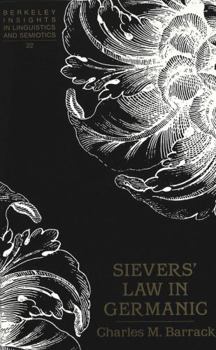Sievers' Law in Germanic
One of the most interesting changes in Proto-Germanic was the alternation of y and w after short syllables with i and u after long, respectively - an alternation with far-reaching effects. Described by Eduard Sievers in 1878, this law has been the subject of controversy ever since. Is it related to a similar phenomenon in Vedic Sanskrit, and was it, therefore, Indo-European in origin? What is its relationship to alliterative...
Format:Hardcover
Language:English
ISBN:0820430420
ISBN13:9780820430423
Release Date:February 1998
Publisher:Peter Lang Inc., International Academic Publi
Length:288 Pages
Customer Reviews
0 rating





